Keywords
|
| Permanent Magnet Brushless DC Motor, Pulse width modulation (PWM), Sinusoidal PWM, Space Vector PWM, Voltage Source Inverter. |
INTRODUCTION
|
| The inverters are used to converts dc power into ac power at desired output voltage and frequency. The waveform of the output voltage depends on the switching states of the switches used in the inverter. Major limitations and requirements of inverters are harmonic contents, the switching frequency, and the best utilization of dc link voltage. Pulse width modulation (PWM) inverters are studied extensively during the past decades. In this method, a fixed dc input voltage is given to the inverter and a controlled ac output voltage is obtained by adjusting the on and off periods of the inverter components. The most popular PWM techniques are the sinusoidal PWM and space Vector PWM. With the development of DSPs, space-vector modulation (SVM) has become one of the most important PWM methods for three-phase voltage source inverters. In this technique, Space-vector concept is used to compute the duty cycle of the switches. It is simply the digital implementation of PWM modulators. Most advanced features of SVM are easy digital implementation and wide linear modulation range for output line-to-line voltages. |
II. SPACE VECTOR PWM
|
| The Space Vector Pulse Width Modulation (SVPWM) refers to a special switching sequence of the upper three power devices of a three-phase voltage source inverters (VSI) used in application such as AC induction and permanent magnet synchronous motor drives.It is a more sophisticated technique for generating sine wave that provides a higher voltage to the motor with lower total harmonic distortion. Space Vector PWM (SVPWM) method is an advanced; computation intensive PWM method and possibly the best techniques for variable frequency drive application. In SVPWM technique, instead of using a separate modulator for each of the three phases, the complex reference voltage vector is processed as a whole. Therefore, the interaction between the three motor phases is considered. SVPWM generates less harmonic distortion in the output voltages and currents in the windings of the motor load and provides a more efficient use of the DC supply voltage in comparison with sinusoidal modulation techniques. Since SVPWM provides a constant switching frequency; the switching frequency can be adjusted easily. Although SVPWM is more complicated than sinusoidal PWM, it may be implemented easily with modern DSP based control systems. |
| A. Space Vector |
| Consider three phase waveforms which are displaced by 120°, |
 |
 |
| These three vectors can be represented by a one vector which is known as space vector. Space vector is defined as, |
 |
 |
| i.e, Vs is vector having magnitude of 3/2Vm and rotates in space at ω rad/sec as shown in Figure 1. |
| This vector can be represented in two dimensional space by simply resolving abc in to dq axis. |
| Therefore space vector can also be written as |
 |
 |
| B. Principle of Space Vector PWM |
| SVPWM aims to generate a voltage vector that is close to the reference circle through the various switching modes of inverter. Figure 3 is the typical diagram of a three-phase voltage source inverter model. S1 to S6 are the six power switches that shape the output, which are controlled by the switching variables a, aâÃâ¬ÃŸ, b, bâÃâ¬ÃŸ, c and câÃâ¬ÃŸ. When an upper transistor is switched ON, i.e., when a, b or c is 1, the corresponding lower transistor is switched OFF, i.e., the corresponding aâÃâ¬ÃŸ, bâÃâ¬ÃŸ or câÃâ¬ÃŸ is 0. Therefore, the ON and OFF states of the upper transistors S1, S3 and S5 can be used to determine the output voltage. Hence there are 8 possible switch states, i.e.,(0,0,0), (0,0,1), (0,1,0), (0,1,1), (1,0,0), (1,0,1), (1,1,0), (1,1,1). The inverter has six states when a voltage is applied to the motor and two states when the motor is shorted through the upper or lower transistors resulting in zero volts being applied to the motor. |
| Consider an inverter feeding a star connected load and center point of the dc link is take as reference point as shown in Figure 5, |
| The potential of point a, point b & point c with respect to the center point of the dc link is known if the conducting states of the switches are known. When upper switch is „ONâÃâ¬ÃŸ, the potential of a, b &c is Vdc/2 & when lower switch is „ONâÃâ¬ÃŸ, the potential of a, b &c is − Vdc/ 2. |
 |
 |
| There are 6 non-zero vectors (V1 to V6) and 2 zero vectors (V0 & V7). Table 1 summarizes switching vectors along with the corresponding line to neutral voltage and line to line voltages applied to the motor. |
| While plotting 8 voltage vectors in complex plane, the non-zero vectors form the axes of a hexagon as shown in Figure 6.The angle between any adjacent two non-zero vectors is 60 electrical degrees. The zero vectors (or null vectors) are at the origin and apply a zero voltage vector to the motor. If the phase voltages are sinusoidal, locus of the „VsâÃâ¬ÃŸ is circle. |
The maximum value of Vs for which locus is circle is the radius of the inscribing circle, i.e, |
III.REALIZATION OF SPACE VECTOR PWM
|
| The space vector PWM is realized based on the following steps: |
| A. Step 1: Determine Vd, Vq, Vref, and angle (α) |
| From Equation 5, the Vd, Vq, Vref, and angle (α) can be determined as follows: |
 |
| B. Step 2: Determine time duration T1, T2, T0 |
| In space vector PWM technique, the required space vector is synthesized by two adjacent vectors and null vector. |
| ïÃâ÷ Switching time duration at Sector 1 |
| From Figure 7, the switching time duration can be calculated as follows: |
| According to volt-sec balance principle, |
 |
| T1 is the time for which V 1 is applied |
| T2 is the time for which V 2 is applied |
| T0 is the time for which null vector is applied |
| Ts is the sampling time |
| Similarly switching time duration at any sector can be calculated. |
| C. Step 3: Determine the switching time of each transistor (S1 to S6) |
| Figure 8 shows Space Vector PWM switching patterns at each sector. |
| Based on Figure 8, the switching time at each sector is summarized in Table 2, and it will be built in simulink model to implement SVPWM. |
IV.BLDC MOTOR
|
| BLDC motors are used in industries such as Appliances, Automotive, Aerospace, Consumer, Medical, Industrial Automation Equipment and Instrumentation. As the name implies, BLDC motors do not use brushes for commutation; instead, they are electronically commutated. BLDC motors have many advantages over brushed DC motors and induction motors. A few of these are: |
| ïÃâ÷ Better speed versus torque characteristics |
| ïÃâ÷ High dynamic response |
| ïÃâ÷ Higher speed ranges |
| ïÃâ÷ Long operating life |
| ïÃâ÷ High efficiency |
| ïÃâ÷ Noiseless operation |
| In addition, the ratio of torque delivered to the size of the motor is higher, making it useful in applications where space and weight are critical factors. |
| A. Mathematical modelling of the BLDC motor |
| BLDC motor is fed by a three phase voltage source inverter as shown in Figure9. |
| The analysis of a BLDC motor is represented as the following equations: |
 |
| Where Va , Vb ,Vc are the phase voltages, ia , ib ,ic are the phase currents, ea , eb ,ec are the phase back- EMF waveforms, R is the phase resistance, L is the phase inductance of each phase and M is the mutual inductance between any two phases. |
 |
V.SIMULATION OF SVPWM INVERTER FED PM BLDC MOTOR DRIVE
|
| SVPWM inverter fed PM BLDC motor drive was designed & simulated successfully using MATLAB (SIMULINK) & following results were generated. Simulation parameters are given in Table 4. |
VI. ADVANTAGES OF SVPWM COMPARED TO SINUSOIDAL PWM
|
| 1. Since the triplen order harmonics are appeared in the phase-to-centre voltage of SVPWM, it has higher modulation index compared to the Sinusoidal PWM. When the modulation index increases the THD of the output voltage decreases. Hence SVPWM has less amount of current and torque harmonics than those of sinusoidal PWM. |
| 2. For Sinusoidal PWM (SPWM) Vmax = Vdc/2 |
| For Space Vector PWM Vmax = Vdc/√3 |
| Where, Vdc is DC-Link voltage. From this it is clear that Space Vector PWM can produce about 15 percent higher than Sinusoidal PWM in output voltage. |
| 3. In SPWM different phases may switch simultaneously. But in SVPWM only one phase is switch at a time. Hence SVPWM has reduced switching losses compared to SPWM. |
| 4. The SPWM inverter can be thought of as three separate driver stages which create each phase waveform independently. But Space Vector Modulation treats the inverter as a single unit. |
VI.CONCLUSION
|
| Space vector Modulation Technique has become the most popular and important PWM technique for Three Phase Voltage Source Inverters for the control of AC Induction, Brushless DC, Switched Reluctance and Permanent Magnet Synchronous Motors. In this paper analysis and simulation of space vector pulse width modulation is presented. The Modulation Index is higher for SVPWM as compared to SPWM. The current and torque harmonics produced are much less in case of SVPWM. In case of SVPWM the output voltage is about 15% more as compared to SPWM. The SVPWM technique utilizes DC bus voltage more efficiently and generates less harmonic distortion in a three-phase voltage-source inverter. SVPWM is very easy to implement. There are modern digital signal processors (DSP) with dedicated pins which give a pulse width modulated waveforms using SVM. |
Tables at a glance
|
|
|
| |
Figures at a glance
|
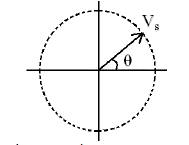 |
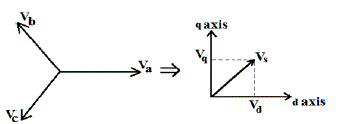 |
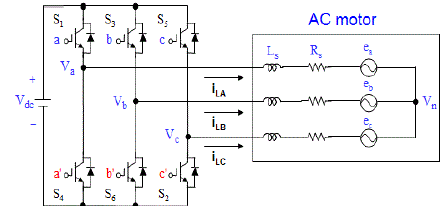 |
 |
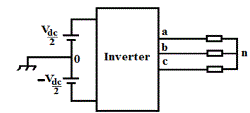 |
| Figure 1 |
Figure 2 |
Figure 3 |
Figure 4 |
Figure 5 |
|
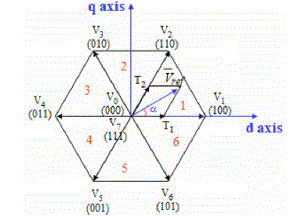 |
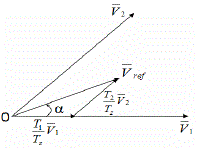 |
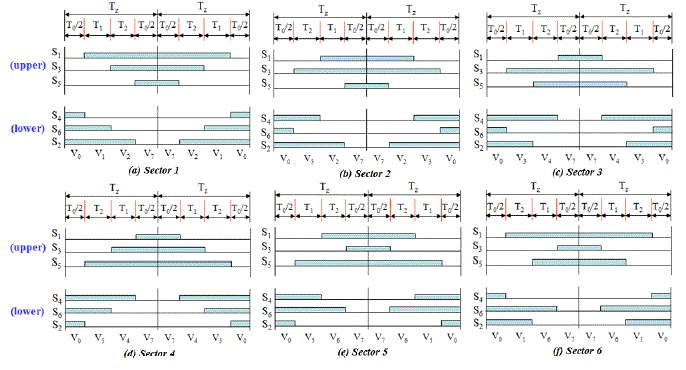 |
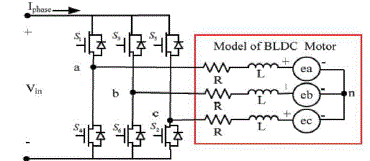 |
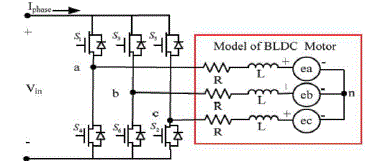 |
| Figure 6 |
Figure 7 |
Figure 8 |
Figure 9 |
Figure 10 |
|
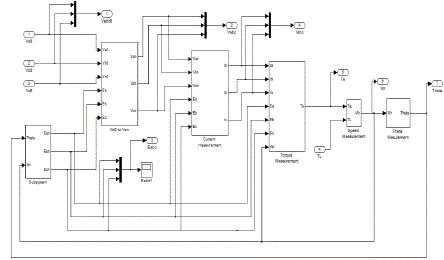 |
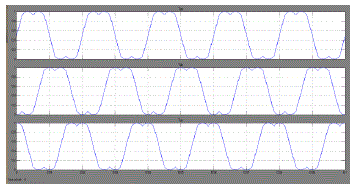 |
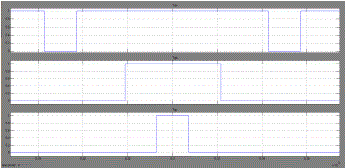 |
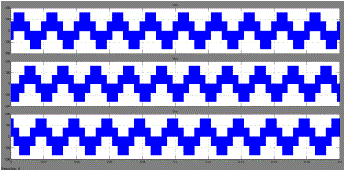 |
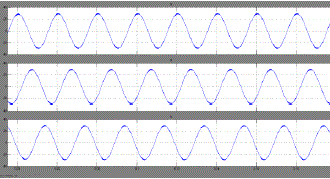 |
| Figure 11 |
Figure 12 |
Figure 13 |
Figure 14 |
Figure 15 |
|
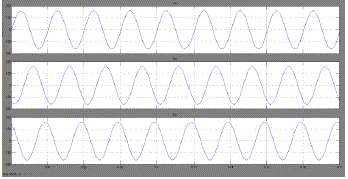 |
| Figure 16 |
|
| |
References
|
- B. K. Bose, “Power Electronics and Variable Frequency Drives: 39 Technology and Applications.”IEEE Press, 1997.
- Rashid, M. H., “Power Electronics Handbook,” Academic Press, 2001.
- Mohan, N., “First Course on Power Electronics and Drives,” MNPERE, 2003.
- R. Krishnan, “Electric Motor Drives Modelling, Analysis and Control”, Prentice Hall, 2001.
- J. Holtz, “Pulse width modulation – A Survey”, IEEE Transactions on Industrial Electronics, Vol. 30, No.5, Dec 1992, pp. 410-420.
- H. W. V. D. Brocker, H. C. Skudenly and G. Stanke, “Analysis and realization of a pulse width modulator based on the voltage space vectors,”inConf. Rec. IEEE-IAS Annu. Meeting, Denver, CO, 1986, pp. 244–251.
- Dorin O. Neacsu, “Space Vector Modulation–an introduction,” The 27th annual conference of the IEEE industrial electronics society.
- Keliang Zhou, and Danwei Wang, “Relationship between space vector modulation and three phase carrier- based PWM: A ComprehensiveAnalysis”, IEEE Transactions on Industrial Electronics, vol. 49, No.1, February 2002, pp.186-196.
- Yi Huang, Chunquan Li “Model and system simulation of Brushless DC motor based on SVPWM control” 2nd International Conference onElectronic& Mechanical Engineering and Information Technology (EMEIT-2012)
|